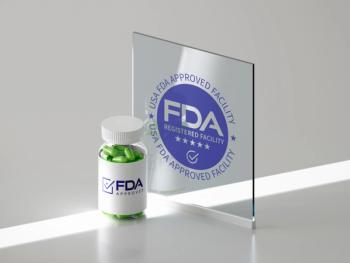
Prophylactic methylergonovine reduces blood loss in twin cesarean delivery
A recent study found that administering prophylactic intramuscular methylergonovine after umbilical cord clamping significantly reduces intraoperative blood loss and hemoglobin drop in twin cesarean deliveries.
Intraoperative blood loss and hemoglobin drop on postoperative day 1 after twin cesarean delivery (CD) is significantly reduced by the administration of prophylactic intramuscular (IM) methylergonovine after umbilical cord clamping, according to a recent study published in Pregnancy.1
Postpartum hemorrhage odds are increased by uterine overdistension impairing myometrial contractility after delivery, creating unique challenges for the obstetrical management of twin pregnancies. This is a significant contributor to maternal morbidity and mortality.2
“Therapeutic adjuncts to oxytocin are needed when uterine atony is refractory to initial therapy,” wrote investigators.1 “Methylergonovine is a fast-acting, semisynthetic ergot alkaloid that has been shown to minimize intraoperative blood loss when used prophylactically in singleton pregnancies.”
The study was conducted to evaluate the efficacy of prophylactic IM methylergonovine toward reducing blood loss in twin pregnancies with CD. Participants included pregnant adults with a twin gestation of at least 34 weeks planning to undergo CD.
Exclusion criteria included placental or uterine anomalies and contraindications to methylergonovine exposure. Participants were randomly assigned 1:1 to receive either methylergonovine or placebo. A complete blood count was obtained within 72 hours before delivery to assess preoperative hemoglobin levels.
Neuraxial anesthesia was provided to all participants, including 1 hour of 500 mL/h oxytocin followed by 125 mL/h for the 4 hours after cord clamping of the second twin. Following cord clamping, participants received either intramuscular methylergonovine 0.2 mg or intramuscular placebo. Routine postoperative care was provided to all patients.
Maternal blood loss was reported as the primary outcome of the analysis, determined by maternal hemoglobin level on postoperative day 1 vs the preoperative level. Suction cannister contents were measured to assess quantitative blood loss.
Secondary outcomes included postpartum hemorrhage, estimated blood loss, required blood transfusion, additional uterotonic administration, surgical time, intrauterine balloon tamponade or vacuum-induced uterine tamponade device use, B-lynch suture placement, and hemostatic sealant agent use.
There were 66 participants included in the final analysis, with a median 37-weeks’ gestation at delivery. Demographic characteristics did not significantly differ between groups, and preoperative hemoglobin levels were 11.6 g/dL in the methylergonovine group and 12 in the placebo group.
The methylergonovine group reported a mean decrease in maternal hemoglobin level of -1.1 g/dL from preoperative to postoperative day 1, vs −2.1 g/dL in the placebo group. An adjusted mean decrease of 1 g/dL was reported for the change in maternal hemoglobin among patients receiving methylergonovine vs placebo.
Surgical times did not significantly differ between groups. B-Lynch suture was performed in 1 patient receiving placebo, while 6 placebo patients required intraoperative use of 2 or more medications. The methylergonovine group reported significantly less quantitative blood loss, with a median of 891 mL vs 1017 mL in the placebo group.
Estimated blood loss and postpartum hemorrhage incidence were also lower in the methylergonovine group, at 800 mL and 6%, respectively, vs the placebo group with 1000 mL and 18%, respectively. Transfusion was required in 2 methylergonovine patients vs 4 placebo patients.
These results indicated significantly reduced intraoperative blood loss in twin CD through administration of prophylactic methylergonovine after umbilical cord clamping.
“These data support further study of methylergonovine as a preventative treatment strategy at the time of twin CD with the potential to reduce the risk of postpartum hemorrhage and associated sequelae in this at-risk patient population,” concluded investigators.
References
- Gomez Slagle HB, Miller R, Bejerano S, Goffman D, D'alton ME, Mourad M. Intramuscular methylergonovine to decrease blood loss during cesarean delivery for twins: A triple-blinded placebo-controlled randomized trial. Pregnancy. 2025. doi:10.1002/pmf2.12039
- Bienstock JL, Eke AC, Hueppchen NA. Postpartum Hemorrhage. N Engl J Med. 2021;384(17):1635-1645. doi:10.1056/NEJMra1513247
Newsletter
Get the latest clinical updates, case studies, and expert commentary in obstetric and gynecologic care. Sign up now to stay informed.
















